Why Facilitators Need to Talk About Race
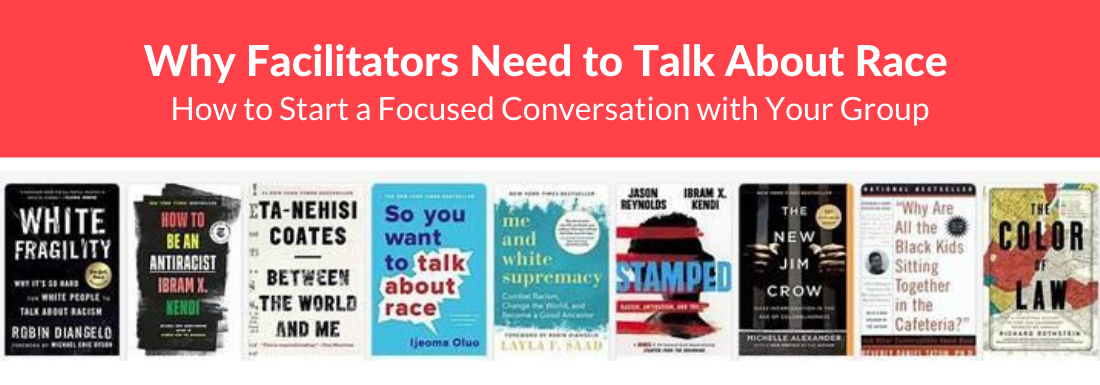
This month I’m continuing on the topic of race (a social construct which has complex origins and often, harmful consequences) and facilitation. In full disclosure, I am not a full-time facilitator of racial dialogues. I have had many occasions to hold these conversations in groups because it comes up in strategic planning, or team-building/conflict interventions. In this context and these times, the topic of race will come up more for all facilitators. So be prepared to honour that need and discuss it!
Thus, I humbly offer this blog. It’s not an easy or comfortable topic for most of us. For Black, Indigenous and People of Colour (BIPOC) facilitators (this term is complex and controversial too – see resources section), it often is tricky to facilitate white (and there is controversy about whether to capitalize the words white and black – see resources) people in the group who may become defensive or need care-taking. For white facilitators, working with a mixed BIPOC – white group, it often can be difficult to interrupt or sense when racist behaviour is occurring. This is partly because white people do not see it. Thus, most of us choose to stay away from these complex conversations if at all possible.
I’ve decided I cannot stay away from these conversations. I need to have them both with white people and with my colleagues and friends from the BIPOC community. So I urge you as leaders and facilitators to go into these courageous spaces. Your job will be to have the courage to design the interventions and conversations and lead them in a way that truly starts the behavioral changes that are needed. It’s not ok anymore just for white people (me included) to put up Black Lives Matter signs and say nice words without changing our behavior.
The facilitation methodologies that I’m going to propose to use in these interventions/ conversations include the careful sequenced and blended use of many methods and tools. They include the ToP Focused Conversation Method- ORID (as a framework more than the conversation method) , Constructivist Listening, Appreciative Inquiry, Non Violent Communication (NVC), Emotional Intelligence (EQ), heart brain coherence technique, and more. In additon, you as the facilitator need some understanding of the complex and paradoxical, damaging nature of the social construct of race and colorism. That’s all. It’s really quite simple (I am joking!). But if I can blog about it as a white person with all of my own imperfections, you can learn to talk about race and facilitate conversations too. If you are white and have been educating yourself, courageously accept this as your next deep inner work to do to change the world of this oppression. If you identify as Black, Indigenous, and Person of Color, courageously practice honesty and truthfulness about what hurts you with white people. Do not take care of us.
Because this is such a complex topic, I’ve classified this blog for more advanced practitioners (Stage 8 – Questioner & Stage 9 – Keeper). If you are curious about the stages, click on the green icons above. It does not mean you have to be a deeply experienced facilitator to lead in being an anti-racist. It will help a lot to stay aware and mindful of the impact you are having, keep healing yourself, work on your own racial identity, and willing to notice and apologize for mistakes made.
There is no perfect moment to start having conversations about race with your groups. You will probably never be skilled enough – none of us will – I certainly won’t. But you will need to have done some “education” and inner preparation work. If you are white, don’t do all of your reflecting in white groups, because then you just might conflate erroneous ideas. Although it is not the job of People of Colour to educate us whites, it certainly helps to have conversations together if the care and conditions are in place.
One key for you as a white person with Black, Indigenous and People of Colour is to not be defensive, give a lot of space for your colleagues and friends of color to share their thinking without interruption from you, and to appreciate them in an authentic way. That requires inner work. I think it is also helpful to share back what you have heard from them so you can test your understanding. If you share back accurately, it is truly a gift for Black, Indigenous and People of Colour to be heard in this way. If you shared back inaccurately with your own white lens of privilege and supremacy, they MAY be willing to correct any misinformation you have. Do not count on it! BUT, it will go better if you stay open, and non-defensive in your facial expression, voice tone and body language to accept feedback.
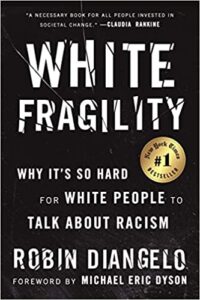
I truly welcome any feedback on this blog. I have been trying to educate and act in anti-racist ways for the last 15 years, and I remain in awe of the journey. Many of you facilitate racial dialogues professionally full time. Please share ideas to expand and contradict what is here if you are willing!
Here are 2 topics that I have been discussing with others or reading about. I deeply thank ToP colleagues Erima Fobbs of Virginia (www.collectivehealthimpact.com) and Eunice Shankland of Colorado (www.shanklandassociates.com) who “played” with me back and forth all day about this blog. Also, my podcasting buddy, Rangineh Azimzadeh Tosang, has been giving me feedback. You can find her at www.solhresolutionsinternational.com. You can also find them on Linked In. We have sprinkled the blog with images of books I’ve been reading or others have recommended to me. Some were mentioned in last month’s blog. Apparently, sales have increased by 2000-6000+% on books on racism since the highly publicized deaths of innocent Black lives in recent months. I am regularly adding resources to this blog and editing it as my thinking evolves and changes.
Two Conversations/ Workshops You Might Have or Adapt to your needs (Please adapt and correct any places where I have used racist language or operated out of my own white supremacy lens)
1. How do we intervene when we see characteristics and behaviours of white supremacy/ dominance culture in our organization?
Preparation:
- Start by running this question and all of your sub questions by your DEI (Diversity, Equity and Inclusion) committee or your BIPOC colleagues and see what they would change in it.
- Work with the leaders to think about this deeply and identify to what they are willing to commit in the short and long term. Ask them to be prepared to speak at beginning and end of the conversation/ workshop to show their support.
- Begin to test informally the concept of white supremacy and how it is understood by the people in the organization. You may choose to use the term white dominance or white privilege instead if it helps get the conversation started.
- Finalize the topic question and send it to your group that is going to have the conversation.
- Suggest some guidelines that the group can refine once the meeting starts. The guidelines should include things such as: we honor everyone’s perspective. We will interrupt oppressive behaviors, words and actions where we notice it.
- Define the goals/aims for the conversation: e.g., create awareness of how structural inequity and white dominance operate; create a safe environment to identify it; and address the inequities in this organization.
- Remind people that you will be using speaking order. People from Black, Indigenous and People of Color community will be invited to speak first if they wish for any question. And, there will always be the “right to pass” on any question you are invited to answer.
- Ask people to search for and bring to the meeting a photo or two, a song title or refrain, a sound byte of what white supremacy culture sounds,looks or feels like? if doing the meeting online, ask them to screen share the image, sound or offer a link.
At the meeting:
- Set chairs up in a circle if at all possible with no tables in between people.
- Create a very simple, low table center piece in the middle of the circle with cloth and flowers or a green plant, i.e something very neutral but very beautiful.
- As people enter, warmly greet them. Ask them how they are doing and listen carefully. Invite them to take any seat that meets their needs. Have healthy, non-sugary snacks and water.
- Ask people to take a few deep breaths before you begin the conversation.
- Appreciate them having the courage to show up.
- Invite honesty and constructive feedback rather than destructive feedback.
- Tell them they can voice or suggest changes to the process if needed. You will check in with all constituency groups to see if they agree with proposed changes.
- Ask everyone to make eye contact with everyone in the room and smile if they are able.
The questions you could ask/activities you could use:
Step 1: Do this as a round robin. Everyone answers if they wish. (Important to create equal playing field at very begining)
- What are 1-3 words that describe white supremacy culture, or white dominance characteristics or behavior for you? Share your photo or sound byte if helpful. There are no wrong answers. If a small group, you may wish to do several rounds as there are many!
Step 2: Invite several responses to all the questions below. Ask the group- what has been the inner impact on your of seeing and hearing all these images?
- What is the opposite of white supremacy culture for you? Tell a story about that. Ask everyone to listen carefully.
- How have you seen white supremacy culture show up in our organization? (Pause here to allow for feelings and needs to come up.) Reflect back such as, “I heard you say …. and that it was frightening for you. It sounds like you were needing acknowledgement for…. What would you correct or add?”
- How have you seen it interrupted or diminished in some way?
- What have we done well in the organization to interrupt racist and white supremacist behaviors, policies, communication? Pause again to appreciate any small successes.
- You may wish to take a stretch break here, or invite people to take a walk quietly on their own.
Step 3: The next step is to invite the group to break into small groups by constituency group, i.e. white people together, People of Color together, to answer the next question.
- What has been particularly hard about noticing and interrupting white supremacy culture? Where are you discouraged? encouraged?
Step 4: Invite people to come back to the group and share without interruption. Each person speaks without anyone commenting or interrupting and answers the question only if they feel safe to do so. Please caution people to not build on someone else’s idea but share from their own experience, and from their hearts. As a facilitator, do not take care of anyone’s feelings. Respect them and show empathy. Do interrupt white fragility behaviour. See DiAngelo’s book on this topic in resources below.
- What are some safe ways to interrupt hurtful, racist or white supremacy behavior and culture that have worked before for any of you?
- What would our work place look and feel like if we could reduce the impact of white supremacist policies, practices and behaviors?
- Note:You may wish to end the conversation here and start the next few steps at another meeting. if you do, be sure to ask some good closing questions like: what went well or you? what was difficult? what shall we be sure to do next time? Do first in dyads then in plenary.
- What are some short term things we can do? What are some long term things we have to do? You could break into a more formal brainstorming session in small groups or in plenary here if time permits. Capture all ideas in writing.
- Back in plenary, ask several people to name some of the themes of actions proposed. Ask which ideas most resonate and why. Ask: which actions will be catalytic? Allow for some paired sharing to discuss this confidentially. Hear as many answers as time permits.
- Ask: what has been the impact on you of starting this conversation?What is our commitment to each other?
- How can we keep peeling back the layers so we authentically care and support one another and create a truly equitable, inclusive culture?
Step 5: Send people back into small groups, pairs or triads. Let people choose who they go with. Each person shares what was meaningful and what was difficult about this conversation. Encourage them to share hopes and take responsibility for individual commitment, and some leadership initiatives.
Step 6: Come back together as a group and invite the BIPOC participants to speak first, sharing ideas about what would be most meaningful to them to stop perpetuating the most hurtful, racist and white supremacy behaviors that are operating. Ask the white participants what they heard. Test for accuracy with BIPOC participants.
Step 7: Thank everyone for coming and ask them when they would like to meet again and continue the task of dismantling white supremacy culture in the organization?
8. Ask the leaders of the organization to share what they heard, and what are committed to do in the near and long term future.
2. Why does talking about the impact of race on us all deeply matter even though it is a divisive, social construct?
Please note: This activity and questions are far from perfect. I am still playing with it. Please offer your ideas to make it more helpful, or perhaps a different topic?
Preparation:
- Start by running this question and all of your sub questions by your DEI committee or your BIPOC colleagues and see what they would change in it.
- Begin to explore the concept of race as a social construct with people who will be attending the meeting. Begin to informally ask them what their definition of race is and how it has impacted them.
- Finalize the topic question and send it to your group that is going to have the conversation (and if you think it will be helpful, all of the questions in the meeting with the amount of time and objectives).
- Suggest some guidelines that they can refine once the meeting starts. The guidelines should include things such as: we honor everyone’s perspective. We will interrupt oppressive behaviors, words and actions where we notice it.
- Identify the goal(s) for the conversation as, e.g., begin to understand why talking about race is important; get connected to one another while deeply respecting our different life experiences, race journeys and context.
- Remind people that we will be using speaking order and people from black indigenous and people of color will be invited to speak first if they wish for any question. And, there will always be the right to pass any question you are invited to answer.
At the meeting:
- Set chairs up in a circle if at all possible with no tables in between people.
- Create a very simple table with cloth and flowers or a green plant, i.e something very neutral but very beautiful. You might also have pipe cleaners or something for people to figit with if you are meeting in person, or do a fun energizer if you are meeting virtually.
- As people enter, warmly greet them. Ask them how they are doing and listen carefully. Invite them to take any seat that meets their needs.
- Ask people to take a few deep breaths before you begin the conversation. You could also introduce them to the Heart Brain Coherence Technique (see video Destress… below) .
- Appreciate them for having the courage to show up.
- Invite honesty and constructive feedback rather than destructive feedback.
- Encourage people to ask for clarification if they don’t understand something. Remind people to use neutral, friendly voices when they are puzzled.
The questions you could ask/activities you could use:
Step 1: In round robin 1, your full name and how do you identify racially (just your skin color please)?
Step 2: Open floor to the questions below but seek to get about 5-6 answers from the group. be sure to ask for People This is just what people have heard or seen, it is not to be considered fact. Remind everyone to listen carefully and not interrupt, even if there is misinformation shared.
- What is a definition of race you have heard others use?
- What have you heard or read about the origins of the construct of race?
- What have been the damaging effects of creating racial divisions? For whom?
- What, if any, have been any positives around the construct of race? For whom?
- Who has a story of a very positive cross-racial relationship they have or have had? What contributed to that beautiful relationship?
- What would a world without racial divisions look and feel like?
- How might we begin to build trusting cross racial relationships in our organization/ society?
Step 3: Break into pairs or triads by constituency group to have everyone share using the Constructivist Listening Technique, i.e. give everyone about 3-5 minutes to share without interruption or referring back to what they said once they have finished. (See video in resources below)
- What is needed to begin building meaningful supportive and equitable relationships across race?
- What does this suggest we might do as an organization in our steps toward racial healing?
Step 4: Come back together as a group and invite the BIPOC participants to speak first, sharing ideas about what would be most meaningful to them to take as action steps and/or to continue these conversations.
Step 5: In plenary:
- What might we do as a first catalytic, but realistic step?
- When shall we meet again? What other questions need to be addressed?
Thank everyone for coming and ask them when they would like to meet again to keep building an equitable, inclusive culture organization?
Step 6: invite the leaders to share what they have heard and commit to what leadership can do as result of this conversation. Ask the group to give the leader(s) feedback on this assessment.
Please do comment. What resonates for you? What does not? What has worked for you? I appreciate you reading this and hope that we will all take this topic into our hearts through the globe to transform society.
Resources:
Article ”Where Did BIPOC Come From?” June 2020 by Professor Sandra Garcia https://www.nytimes.com/article/what-is-bipoc.html
Article “The Case for Capitalizing the B in Black” June 2020 by Professor Kwame Anthony Appiah https://www.theatlantic.com/ideas/archive/2020/06/time-to-capitalize-blackand-white/613159/
Article “Black and White – Why Capitalization Matters” June 2015 by Merrill Perlman updated 2020 https://www.cjr.org/analysis/language_corner_1.php
Article: White fragility is real. But ‘White Fragility’ is flawed. by Carlos Lozada – June 2020
https://www.washingtonpost.com/outlook/2020/06/18/white-fragility-is-real-white-fragility-is-flawed/
Article: Sales of White Fragility and another anti-Racism books – Jumped over 2000% after Protest Begin. July 2020 by Jemina Envoy https://www.forbes.com/sites/jemimamcevoy/2020/07/22/sales-of-white-fragility-and-other-anti-racism-books-jumped-over-2000-after-protests-began/#2
The Characteristics of White Supremacy Culture
From Dismantling Racism: A Workbook for Social Change Groups, by Kenneth Jones and Tema Okun, ChangeWork, 2001
Book: by former ICA colleague: The Seed of Imagination – An Ancestral Creative Journey by LiDoña Wagner
Other books, blogs and videos recommended by colleagues:
Anti-Racism Daily Newsletter: https://www.antiracismdaily.com/?utm_source=newsletter&utm_medium=email&utm_campaign=subscribe
You tube on racial healing circles: https://youtu.be/8MBjJq6Si_I
Videos mentionned in blog – the Destress one has the heart brain coherence technique in it.



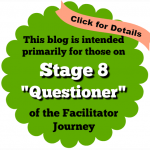
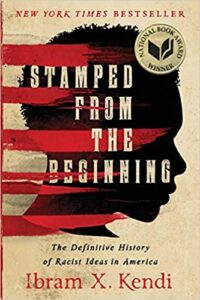
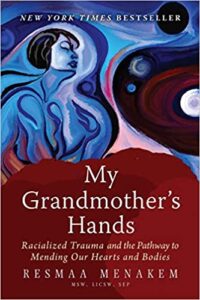
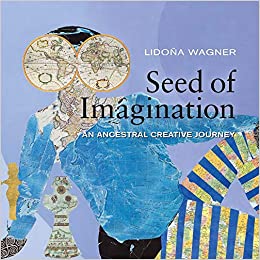
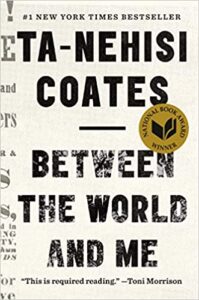
Glad to see these methods being used to deal with such a deep, complicated and explosive issue.
As an Asian, I see this more as a discussion about white supremacy rather the broader issue of racism. There are two other things we should also look at.
One is that outside the North American context, other things, such as politics, makes
this a more complicated issue. In many places, politicians use racial identity to manipulate people. So the issue here is not just racist feelings that may exist among communities, what appears to be racism is actually a mask. Race is sometimes an artificial construct. In Malaysia, where I live, various ethnic groups are officially categorised as “Malay” although the same ethnic groups in neighbouring Indonesia would not use that term to describe themselves and may even find it offensive. For example, people from island of Java or Javanese are considered Malay in Malaysia. The reason for doing this is to create a large bloc that various politicians can claim to be a champion of. So when you deal with racism in Malaysia, you also have to unpack all this as well.
The other issue is racial mixing, which is happening more and more. When a child is born to an Indian father and Chinese mother, what happens to the racial identity of the child? The same situation exists in the US. Should the child of a black father and white mother be seen as black or white? For example, is President Obama a black or a white? Why should he be seen as a black?
To me, underlying all this is a deeper issue – the tribal instinct to take up positions behind one of two groups: “us” and “them”. This was crucial to our survival in the past. Today, we have to defeat this drive. Going against it will require a collective leap in society’s consciousness.
hello Dharmalingam,
Thank you so much for sharing your perspectives on race from Malaysia. I am deeply touched by you taking the time to comment and share how race is confounded in your country, by politics and many other factors. Yes, race is an artificial construct but nonetheless has affected each of us deeply and harmfully. Thus we cannot ignore it. Mixed race offers difficulties also. What I have noticed is it is more about skin colour here in North America. The darker your skin regardless of your parent’s heritage, you will be treated differently and targeted more by racist behaviour. Former president Obama was darker skinned therefore he got treated as a Black person and experienced racism everyday of his life in the USA. I agree we must rethink race and not use it to divide us. I hope to live to see all of us work and live together in peace in my lifetime. Our job as facilitators is to not shrink from these difficult conversations and to interrupt racist behaviour and words.
May you be well and happy. Please feel free to comment again.
Thank you for such a thought provoking message. It has already made me begin to think differently.
Thank you so much Sandra. I am glad. My thinking on this changes daily… we are all evolving.